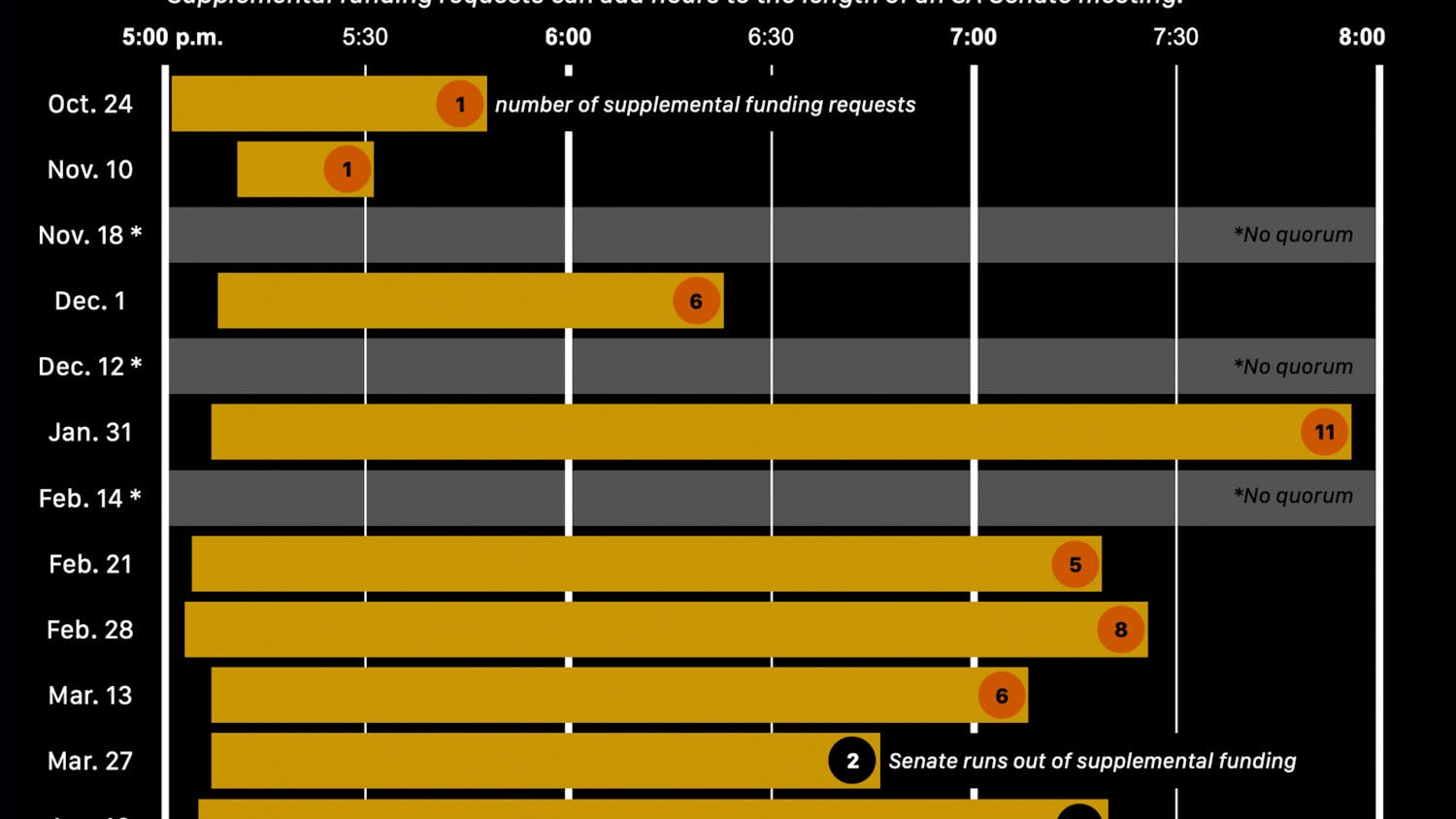The UB Bulls and the Buffalo Bills have much in common besides similar names and buffalo logos. Both play in the pinnacle leagues of their sport: Division I-A for the Bulls and the NFL for the Bills. Both currently enjoy records at or near the bottom of their divisions - 1-4 for the Bulls, 0-4 for the Bills. Unlike the Bills' regression this season, however, the Bulls' fortunes are clearly on the upswing.
Saturday's homecoming game ended in a disappointing 34-14 loss to the Marshall Thundering Herd. Marshall quarterback Byron Leftwich scorched the air of UB Stadium, dominating the game. Leftwich threw for 455 yards, over 300 of those in the first half.
Marshall's domination of the scoreboard and Leftwich's stellar performance gave the impression of yet another gridiron thrashing smacked down on the Bulls. But, the image of the Bulls as outmatched victims in another Division I-A beating results from only a cursory surface examination of the situation.
Yes, the Bulls lost by 20 points and were down 24-0 at halftime. But that doesn't reveal the three turnovers forced by the defense, including a fumble grabbed on Marshall's opening drive as they threatened to score. The scoreboard doesn't show the drive at the end of the second quarter that would have resulted in a UB touchdown if not for an unfortunate fumble out of bounds in the end zone. The score cannot show the excitement that buzzed through the crowd after UB cornerback Mike Lambert intercepted a Leftwich pass and the Bulls threatened to shrink Marshall's 24-7 lead. The score alone does not reveal that the Bulls are better than their record indicates.
Over 12,000 students, faculty, community members and a contingent of Marshall fans packed into the UB stadium for Homecoming. Tailgaters dotted the surrounding parking lots, creating an atmosphere reminiscent of a Sunday at Ralph Wilson Stadium in Orchard Park. The game aired on ESPN, giving UB and Buffalo some welcome national publicity not related to blizzards or local criminals.
The 2001 campaign marks the Bulls' third year in D I-A football. While their record over two and a half seasons is a combined 3-26, the program is on the upsurge. Trouncings suffered by the Bulls, such as last season's 63-7 pounding by Syracuse or last month's 35-0 loss at Bowling Green, are less frequent. More and more of the team's contests are hard fought, with the Bulls in the game until the end, offering fans the thrill of competitive football. If the Bulls reduce their turnovers and capitalize on scoring opportunities, the victories could pile up.
In the past, The Spectrum has been critical of the move to D I-A in light of budget shortfalls and pressing academic needs. Their inaugural 1999 season, when they went 0-11, seemed to confirm doubts about the wisdom of the move. The Bulls' improvement on the field, however, and solutions implemented by the administration to address the academic concerns - the lifting of the CAS hiring freeze, for example - casts the D I-A move in different light.
The administration's vision of D I-A as a cornerstone in a larger UB revival has the potential to succeed. A healthy, competitive football program could make UB more attractive to potential students and athletes while helping to generate revenue to further improve the university and enhance its overall reputation. Just because the potential exists, however, does not mean the program can be proclaimed a success with blanket impunity. The D I-A move, with another five to 10 years of hindsight, might eventually prove a mistake. In present light, however, it seems to have an equal chance for success.
Who knows? In five or 10 years, ESPN might come to UB because of the home team, not the visitors.




